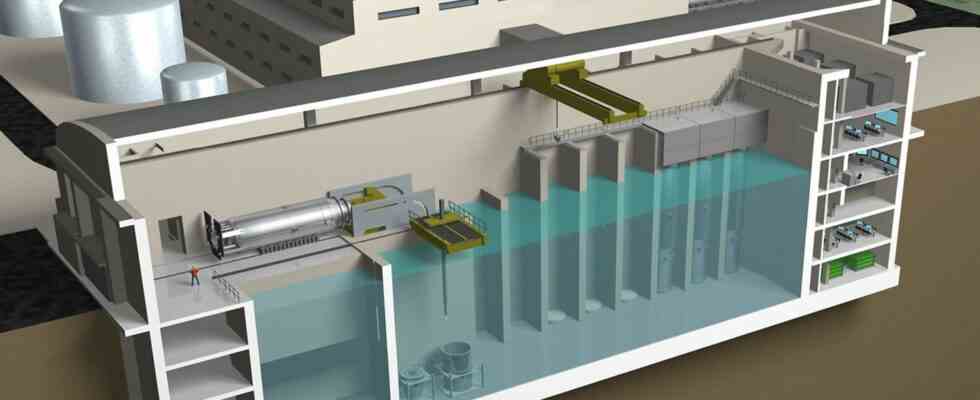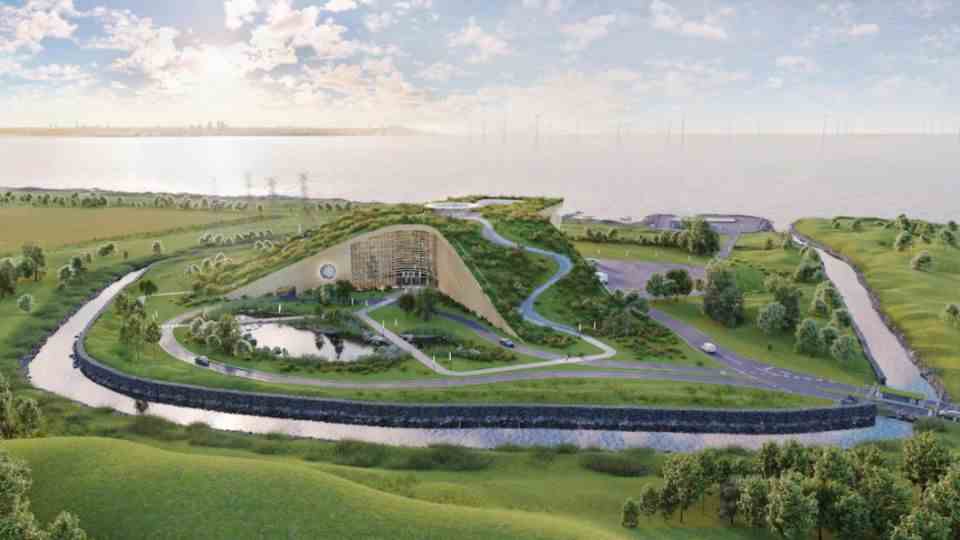nuclear power
NuScale – US nuclear regulatory agency approves first modular mini-reactor
Up to 12 modules can be used in the building.
©PR
In the future, nuclear reactors will be manufactured on the assembly line – the modules will then be put into operation in the actual power plant. NuScale plans to commission its first mini-reactors as early as 2029.
The US nuclear regulatory agency begins to certify a new type of reactor. Since its inception in 1974, NuScale’s reactor is only the seventh model to undergo this process. But in the next few years, a whole flood of permits will be issued. Unlike in Germany, the renaissance of nuclear power is in full swing in the USA. NuScale is a fourth generation conventional reactor. This may not be quite as exciting as trying to achieve nuclear fusion, but it’s a lot more practical. NuScale shows the way that power plant construction will go in the future. The main difference is the size. The old nuclear power plants, which are still in operation everywhere, are as big as cathedrals. Their dome rises above a large reactor that is built on site from individual parts.
Manufacturing in the factory
Nowadays interest is moving towards mini-reactors that can be built in a factory and taken to the power plant as a finished module. In this way, the sensitive technology can be manufactured under clean room conditions. It is hoped that mass production will result in greater precision and far lower costs.
There are other advantages too: maintenance and disposal of the reactor does not have to be carried out in the power plant. The module can be exchanged there. It is then taken back to the manufacturer for work. The know-how of nuclear technology is not passed on either. The module is only operated on site. A leasing model is also conceivable.
Each light water reactor is shaped like a cylinder. It is around 20 m high and has a diameter of 2.7 m. It generates 77 megawatts. A power plant can operate between four and twelve of them. They are hung with a cage in a large tank of water. The plant would then have an output of between 308 and 924 megawatts. The power plant can be operated alone, but is particularly suitable for supplementing power grids that primarily work with renewable energies. Due to the modular design, the power of the plant can be easily ramped up and down again.
No GAU possible
In the modules themselves, as in all reactors of the fourth generation, no GAU – i.e. an uncontrolled meltdown – can take place. In an emergency, the reactor shuts itself down without the need for external intervention by an operator or an emergency system. The first power plant is scheduled to produce electricity as early as 2029, and all six modules are scheduled to go into operation in the course of 2030.




